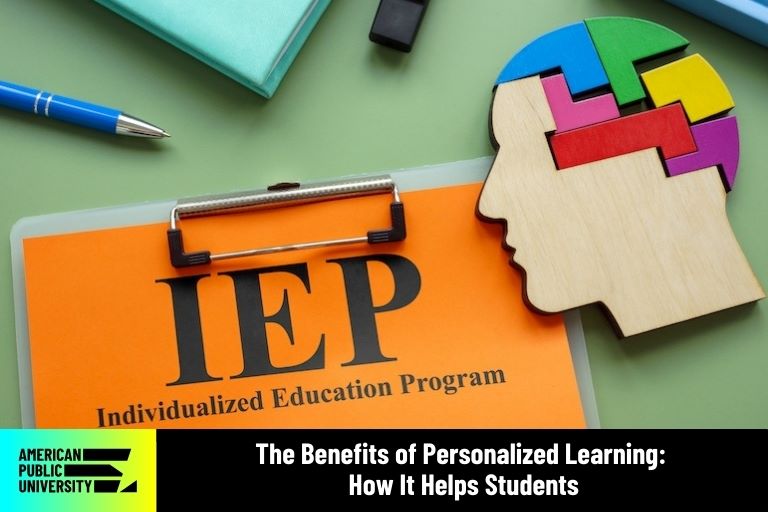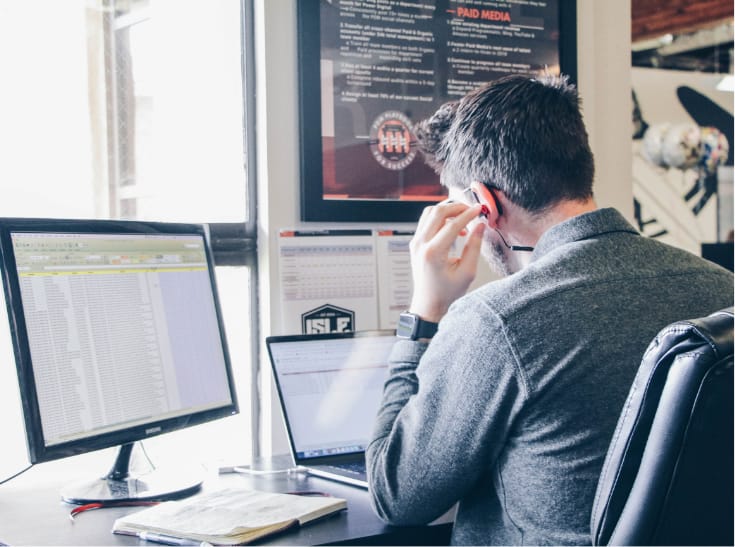By Dr. Kathleen Tate | 04/01/2025

As personalized learning continues to emerge in many schools, some instructors who are new to personalized learning may be curious about what it involves, be hesitant to try it, or wonder about its purposes. Implementing personalized learning has many benefits, but it does require a paradigm shift.
Ideally, resources must be allocated and support within schools should be provided by educational leaders. In addition, instructors will likely need training to effectively facilitate personalized learning environments and achieve positive results for students.
What Is Personalized Learning and How Does It Benefit Students?
Personalized learning is about considering students’ strengths, knowledge, and needs, as well as their interests, individual differences, and learning styles. Individualized and differentiated instruction approaches fall under personalized learning.
Personalized learning involves attending to collaborative approaches with experts and others to make sure that technology, data, and more self-paced learning experiences are scaled to create more flexible learning environments for students. Personalized learning also helps students to participate in learning paths that are more engaging and tailored to them.
The Benefits of Personalized Learning Environments
The 2024 Focus Education Report from edtech provider PowerSchool indicated there is growing demand for personalized learning among students, educators, and families. Promising evidence has emerged about this student-centered approach. For example, Matsh notes that educators who adopt personalized learning show increases in attendance, higher scores on standardized tests, better student engagement, and lower dropout rates.
As teachers prioritize using students’ interests and analyzing individualized data using digital tools, they may create and maintain better learner profiles. Knowing students more comprehensively leads to planning thoughtfully customized lesson activities that allow for:
- Clearer learning paths
- Student-centered individual and collective learning goals
- Flexible, any-time learning experiences
- Self-paced learning
- Improved student outcomes
The Components of Personalized Education
Support for teacher training and investment in various digital devices will help classrooms move from traditional to more dynamic settings. As teachers collaborate more with local and global experts, they can enhance lesson plans with stronger attention to subject matter content.
Integrating technologies (such as apps, websites, devices, and artificial intelligence tools) with discernment based on students’ unique strengths and needs can motivate struggling students. Adaptive learning technologies provide immediate feedback about academic progress, as well as and greater insights about how students learn and how they do in the classroom across different subject areas.
It is important to remember that teachers can no longer teach in the same way. All students within a classroom or grade level do not have to use the same materials, readings, or technologies.
Personalized learning experiences should align to competency-based progression for students' work. For example, students may study the same concept or skill. However, they can read different texts, complete different project-based learning assignments, and participate in different learning processes at their own pace to gain necessary knowledge.
Individual students do not need to complete all stages of the writing process, for example, for each genre studied in a language arts class. Based upon their prior knowledge, learning preferences, skills, and interests, sometimes students may complete brainstorming, drafting, and editing.
At other times, students may complete brainstorming, drafting, editing, revising, and publishing. This way, students learn about all genres during lessons and writing projects, whether they complete all stages of the writing process each time or not.
Students with various strengths and learning challenges do not need to use the same technologies. Some students may benefit from using different devices and websites.
Allowing students to choose their own modality for assessments and the sub-topic within a topic or instructional unit truly leverages their skills, interests, and preferred learning styles. For instance, some students may want to use certain websites for research while others choose to spend more time at the school library.
Similarly, some may prefer to use artificial intelligence (AI) tools to help with brainstorming before drafting/writing. Others might want to use an online mapping tool to help organize their thoughts.
When students have access to technology in the classroom, in local libraries, and at home, there are more opportunities for students to:
- Develop information literacy and digital literacy skills through a personalized approach to their education
- Improve their problem-solving abilities
- Collaborate with peers
- Work at any time and at their own pace
When schools put technology tools in place, that allows students to submit work at any time of the day and connect with others about their assignments. Students can also receive quicker feedback from teachers via email, course learning management systems, or online chats.
Students may create blogs (within protected school websites) or post on private social media areas (facilitated by the teacher) about their learning. They can also read and reply to each other's comments at any time and can learn critical thinking skills.
Overall, personalized learning provides hope for student engagement, improved learning outcomes, and academic success. To improve student achievement, teachers may start with changing one lesson plan at a time and will need technology resources, professional development, and opportunities to connect with subject matter experts locally or beyond the community.
For instructors, planning more technology integration into daily operations and lesson plans will help streamline data collection, communication, feedback, learning pathways, and assessment through better leveraging of learners’ strengths. In addition, focused lessons that address the specific skills students need, provide personalized choices, and support working at one's own pace should foster self-regulatory skills and positive student results.
The Master of Education in Teaching Degree at APU
For adult learners interested in personalized learning and other aspects of education, American Public University (APU) provides an online Master of Education in Teaching. Courses in this degree program are taught by experienced instructors and include a range of topics such as maximizing student achievement through effective assessment, classroom management for the 21st century, and meaningful instruction for different learners and co-teaching.
This degree offers eight concentrations, so that adult learners can choose a concentration that matches their professional goals. There are also a selection of undergraduate certificates or graduate certificates.
For more information on APU’s educational offerings, visit our education degrees and certificates program page.
Note: This program has specific admission requirements. This degree does not award professional licensure, nor does it qualify you to apply for teaching licensure. You should become familiar with the licensure or certification requirements in the state where you wish to be employed. Some programs may have specific admission requirements.
Dr. Kathleen J. Tate is a Professor and Department Chair of Teaching in the School of Arts, Humanities, and Education at American Public University. She is an experienced university administrator, researcher, and the former Editor-in-Chief of the Journal of Online Learning Research and Practice (2016 – 2024). Dr. Tate is also the author of a children’s book “Melvin and Muffin: Physics on the Playground (Exploring Newton’s 3rd Law),” studied six languages, and is proficient with Braille.
She recently published “My Science Journal: A Daily Science Log Featuring Melvin & Muffin,” “My Science Journal: Blank Journal Featuring Melvin & Muffin,” and “Friend Journal: Fill-in-Book for Adults”. Dr. Tate maintains a website she created for educators, families, and children.
Dr. Tate has 28 years of experience working in higher education (Research I, online/hybrid, and other institutions) and K-12 special education, in addition to corporate, civil service, and retail experience. She has chaired and served on dissertation and Ed.S. committees, mentored faculty members, written and received internal and external grants (science education/technology education), and developed curriculum, especially integrating technology.
She holds a B.A. in Soviet and East European Studies with a minor in Economics and a M.Ed. in Special Education from the University of Texas at Austin. In addition, Dr. Tate has several lifetime Texas teacher licenses (1st-8th Elementary Education, PK-12th Special Education, and 1st -8th Theatre Arts) through the University of Texas at Austin. She has a Ph.D. in Elementary Education from Florida State University.
Dr. Tate's research focuses on underserved populations, humane education, integrated/thematic/arts-based/multimodal teaching and learning, and STEAM (STEM + the arts). She served on the Curriculum Advisory Board for the Institute for Humane Education from 2019-2023. Dr. Tate has published articles in Teacher Education and Practice, Social Studies Research and Practice, Youth Theatre Journal, Science and Children, GATEways to Teacher Education, and the Journal of the Research Association of Minority Professors, to name a few.

